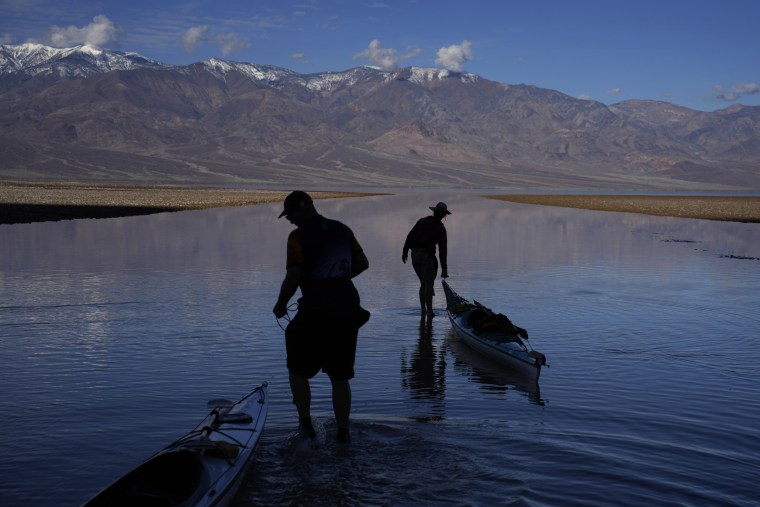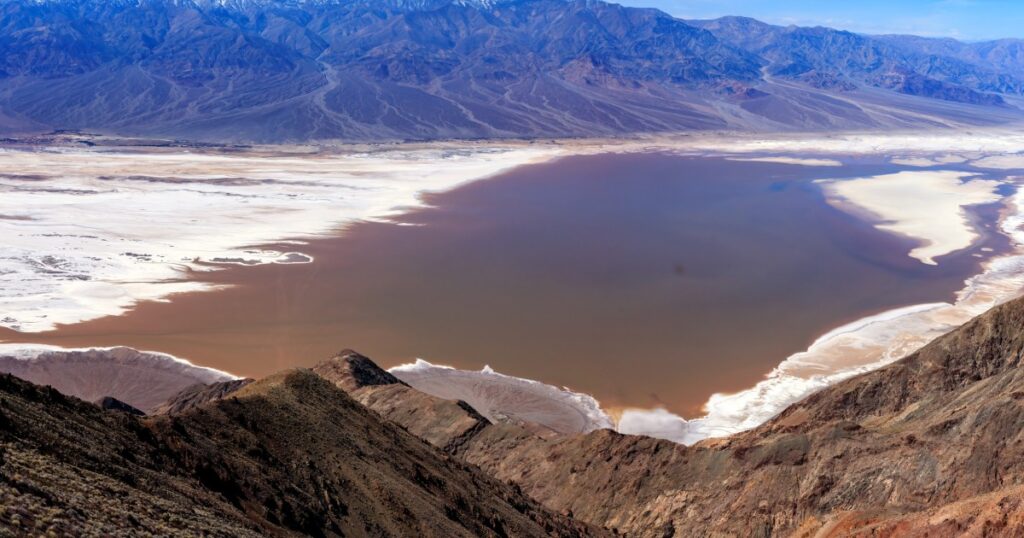Powerful 40 mph winds from Feb. 29 to March 2 in Death Valley blew Lake Manly two miles north, according to the National Park Service. The lake spread out to cover more ground, but at a shallower depth.
The water slowly moved back to its original lakebed, but with the winds speeding up evaporation, Lake Manly was left shallower and muddier than before.
With the current conditions, the National Park Service could no longer allow boating on Lake Manly.
“It was amazing to see an entire lake migrate!” Death Valley National Park Superintendent Mike Reynolds said in a statement Monday. “But now the water is drying up, leaving wide mudflats. People were walking a long way, sometimes dragging their boats. This leaves footprints and drag marks that will likely be visible for years.”
“This left us with no choice but to curtail boating on historic Lake Manly at this time,” Reynolds added.

Lake Manly is a temporary lake that forms in Badwater Basin when enough rain falls to cover the salt flat. The lake returned after two storms brought record amounts of rain to Death Valley: Hurricane Hilary in August and the atmospheric river in early February.
“You might think with no drain to the sea, that Death Valley would always have a lake,” park ranger Abby Wines said in a statement. “But this is an extremely rare event. Normally the amount of water flowing in is much less than the evaporation rate.”
Read the full article here





